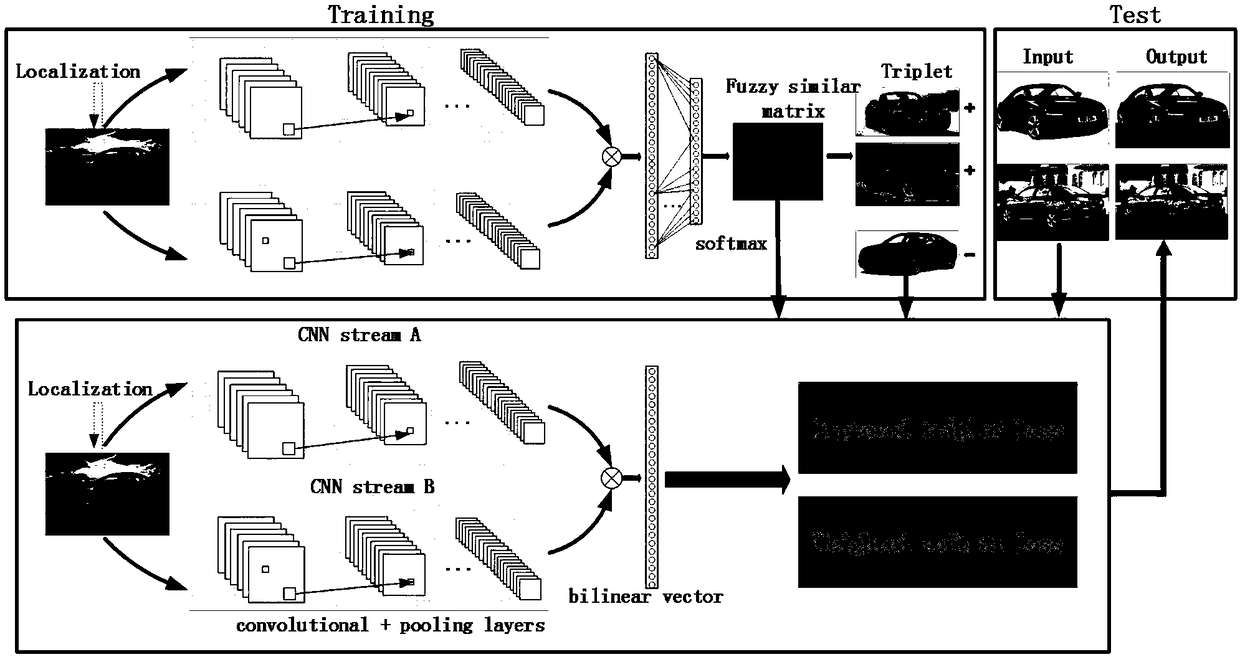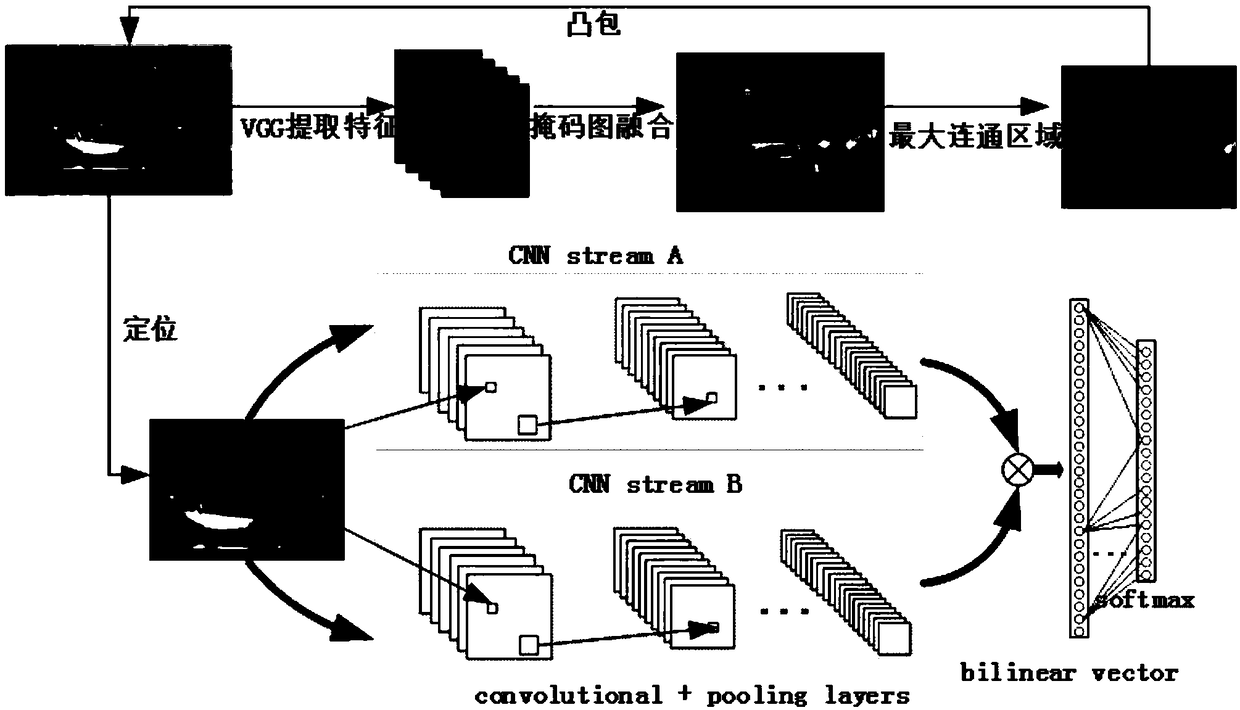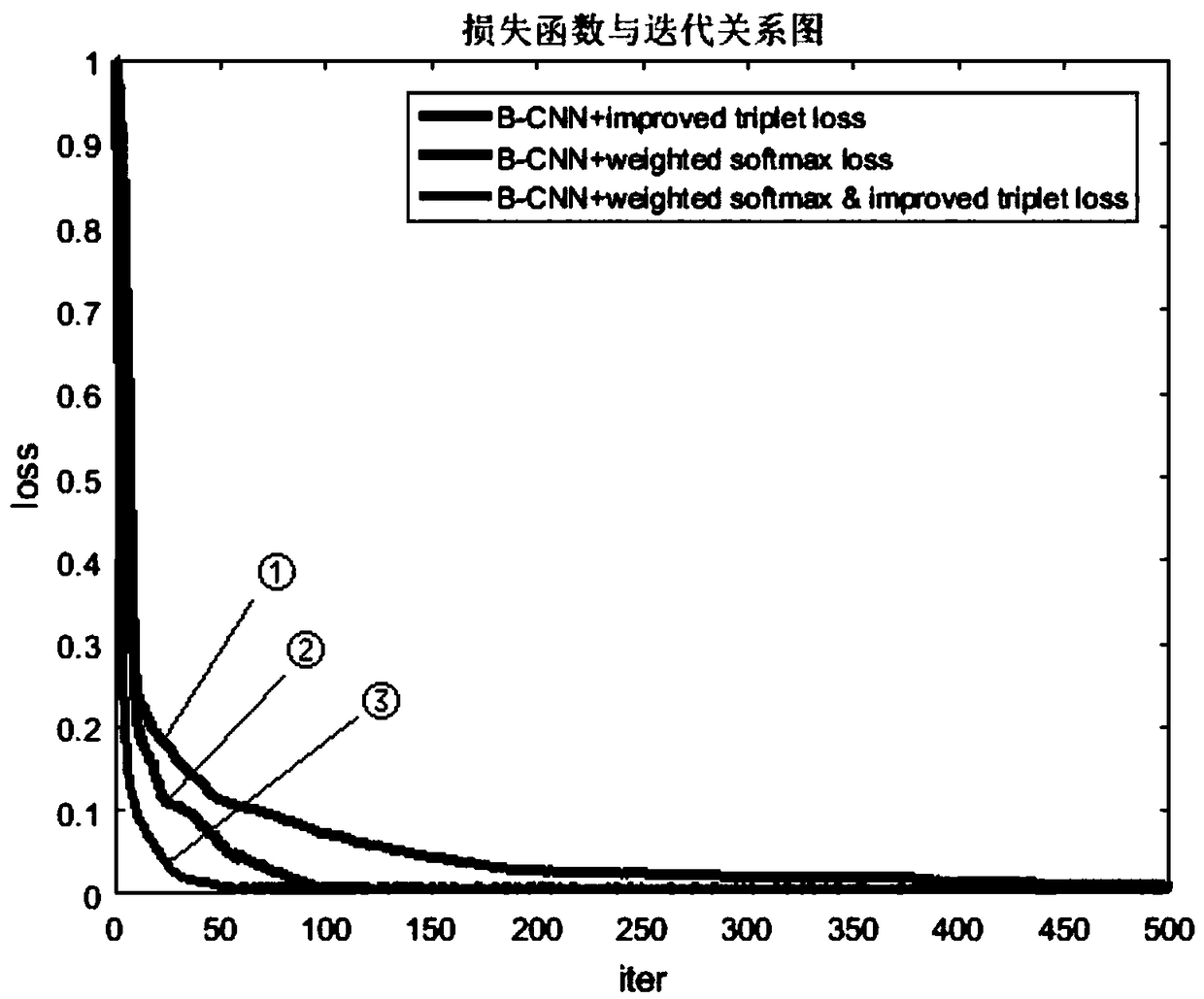Fine-grained vehicle type recognition method based on weak surveillance localization and subclass similarity measurement
A similarity measurement and vehicle identification technology, applied in the field of fine-grained vehicle identification, can solve the problems of similar sub-categories, low degree of discrimination, practical discount, etc., to achieve the effect of improving classification accuracy, accurate positioning, and enhancing the ability to distinguish
- Summary
- Abstract
- Description
- Claims
- Application Information
AI Technical Summary
Problems solved by technology
Method used
Image
Examples
Embodiment
[0056] Shown in conjunction with the accompanying drawings is a specific implementation of a fine-grained vehicle identification method based on weakly supervised positioning and subcategory similarity measurement of the present invention, which includes weakly supervised positioning, building a fuzzy similarity matrix, sampling to form a triplet set, and joint learning The improved loss function has four steps.
[0057] 1) Weak supervision positioning
[0058] Weakly supervised localization does not rely on additional annotation information other than class labels. Since the depth features obtained by each convolutional layer gradually transition from low-level features to high-level semantic features, the integration of different convolutional features can complement each other and improve the final positioning accuracy. Therefore, the convolutional descriptors are screened, and the valuable convolutional descriptors that describe the main objects are selected while discard...
PUM
 Login to View More
Login to View More Abstract
Description
Claims
Application Information
 Login to View More
Login to View More - R&D
- Intellectual Property
- Life Sciences
- Materials
- Tech Scout
- Unparalleled Data Quality
- Higher Quality Content
- 60% Fewer Hallucinations
Browse by: Latest US Patents, China's latest patents, Technical Efficacy Thesaurus, Application Domain, Technology Topic, Popular Technical Reports.
© 2025 PatSnap. All rights reserved.Legal|Privacy policy|Modern Slavery Act Transparency Statement|Sitemap|About US| Contact US: help@patsnap.com



